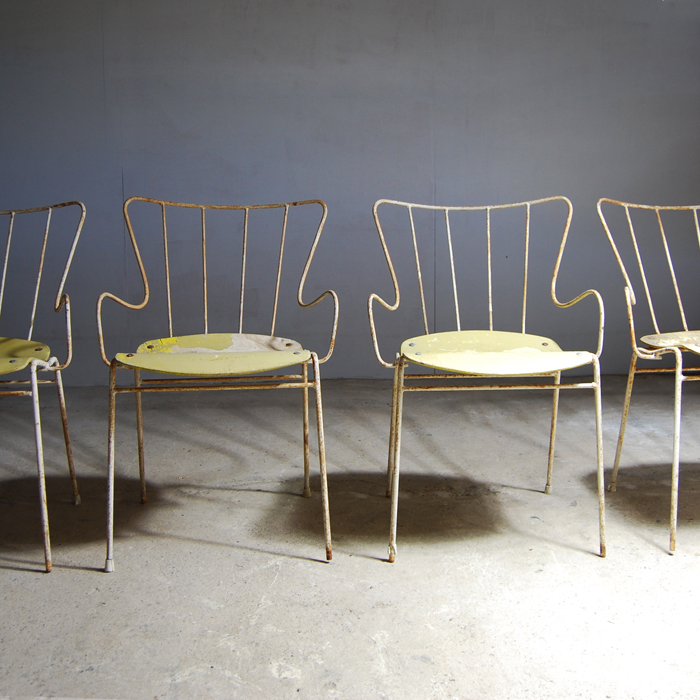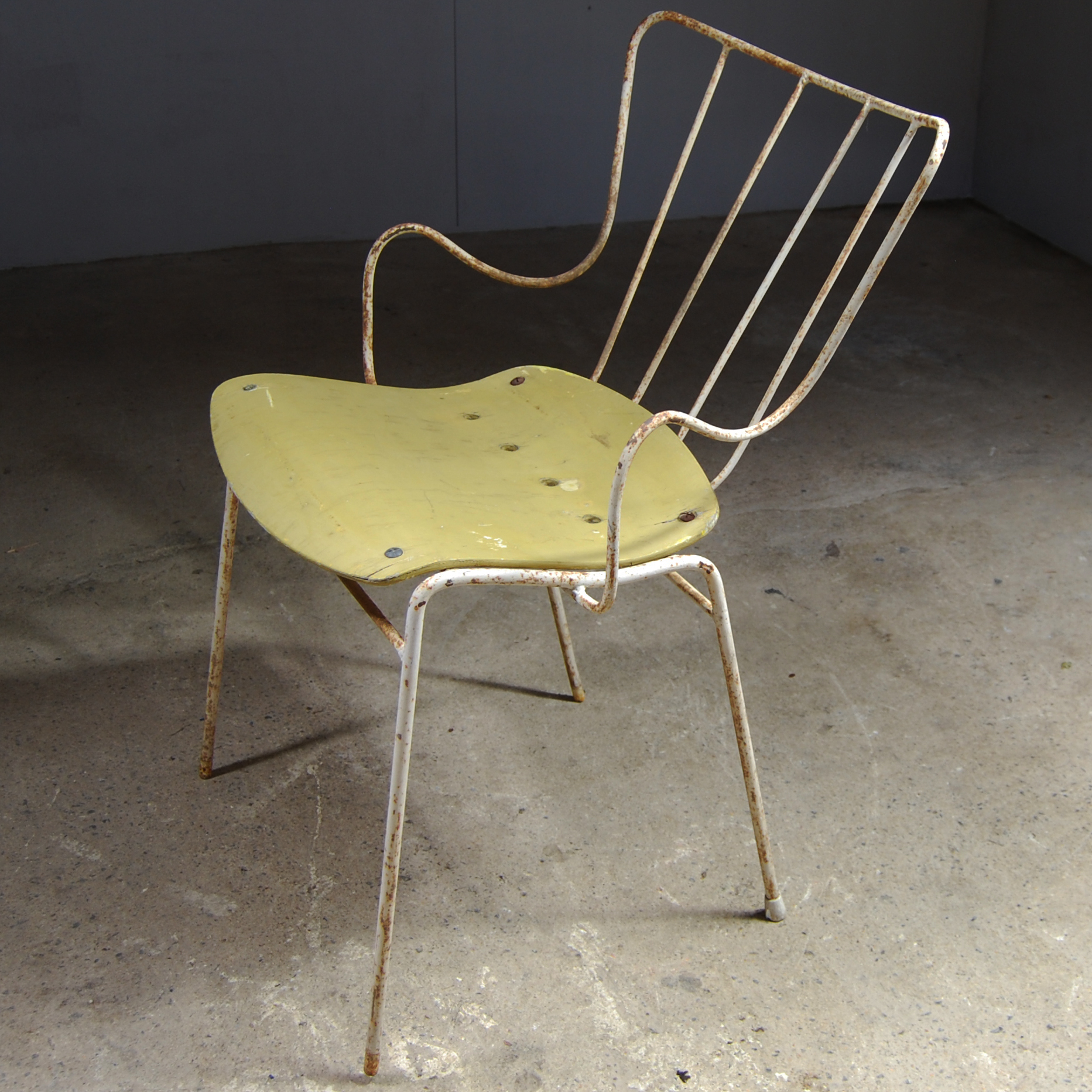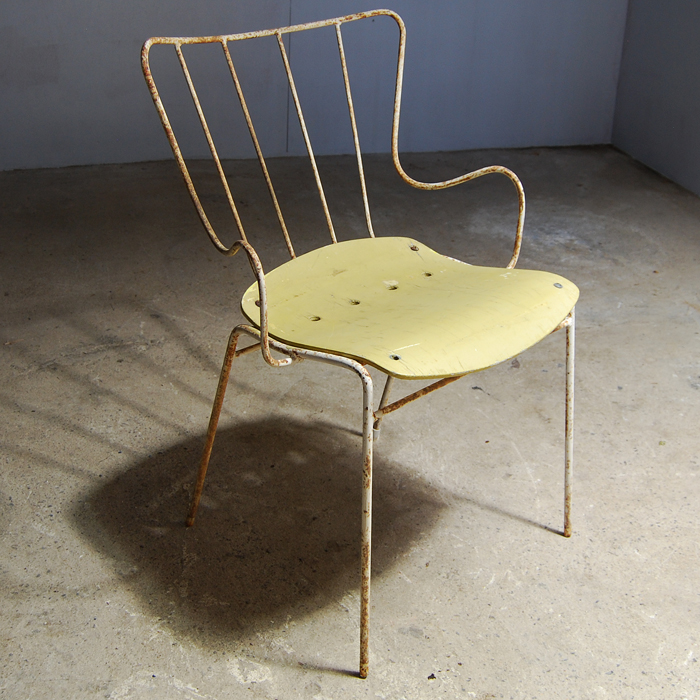Archived Stock - This item is no longer available
A set of four Ernest Race ‘Antelope’ chairs,
the steel frame with a bent-ply squab, cosmetically distressed, some replacement fittings,
SOLD OUT
In stock
This set of four Antelope chairs were bought by an architect from Guildford on his visit to the Festival of Britain on the Soutbank in 1951. They come to LASSCO as a “barn-find” - having ended up tucked-away over more recent decades in the architect's shed. We haven’t touched them – the paint, albeit peeling, is the original Festival of Britain yellow.
An example of the Ernest Race “Antelope” chair, theirs from 1970, is displayed at The Victoria & Albert Museum – it has the same straight feet with a plastic terminating cup - rather than the ball foot. Describing the Festival and this "design classic", the below is taken from the V&A website:
“Six years after the end of the Second World War, and exactly one hundred years since the famous Great Exhibition of 1851 – the first international exhibition of manufactured products – the Festival of Britain was a display of might and fortitude on a national scale, showcasing the best of British manufacturing and design.
The Festival of Britain was intended as a 'tonic for the nation', a spectacular cultural event to raise the spirits of a country still in the grasp of austerity and rationing, and undergoing severe social and economic reform. Held in the summer of 1951, it provided light-relief to 8.5 million people who visited the main Festival site on London's South Bank, and the events held in cities and towns across the country. Importantly, it also acted as a catalyst for a new design aesthetic, launching the career of noted British designers working in the fields of textiles, furniture and graphic design.
Bringing modern architecture to the heart of London, several unique temporary buildings were constructed for the event, including the Dome of Discovery, the largest dome in the world at the time, which housed exhibitions ranging from the physical world to outer space; the Skylon, a futuristic tower that 'floated' on cables; the Telekinema, a state-of-the-art cinema; and Royal Festival Hall, the concert venue that still stands today. Such sculptural structures required unique seating. With wood rationed, however, furniture designs needed to find ways to incorporate alternative materials, like aluminium or steel.
Ernest Race was used to working with the government restrictions, his company, Race Furniture Ltd, had been constructing utility furniture since 1946. TheDA 1 armchair used cast aluminium frame parts – a technique which had been developed for the war-time munitions industry – rather than wood, and an internal frame made of steel rods. Five years later Race's Antelope chair, produced specifically for the Festival of Britain outdoor terraces, was constructed similarly from die-cast aluminium and steel rods. It featured a plywood seat, painted in the festival colours of yellow, blue, red or grey, along with distinctive ball feet and a delicate curving top rail that became synonymous with the Festival style.
The Springbok chair, also by Race, was stackable and used both indoors and out. Race made no effort to hide the frame or materials: the seat and back are formed of springs covered in PVC sleeves that could be supplied in the Festival colours. Both designs became hallmarks for Race, who continued producing them even after the Festival closed.”




